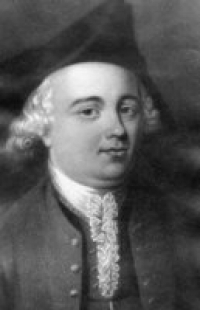John Kay
Kay, John
John Kay (c. 1704-1780), English inventor of the 'flying shuttle' (1733), a machine that dramatically improved the productivity of textile manufacture. For centuries, handloom weaving had been carried out on the basis of the shuttle bearing the yarn being passed slowly and awkwardly from one hand to the other. Kay placed shuttle boxes at each side of the loom connected by a long board, known as a shuttle race. By means of cords attached to a picking peg, an individual, using one hand, could cause the shuttle to be knocked back and forth across the loom from one shuttle box to the other.
A weaver using Kay's flying shuttle could produce much wider cloth at faster speeds than possible with previous weaving methods. In 1753, Kay's house in Bury, Lancashire, England was ransacked by a mob of textile workers who feared that his machines would destroy their livelihood. Kay never profited significantly from his invention of the flying shuttle.
Further Reading
John Kay (1704-1780): Inventor of the Flying Shuttle (Cotton Town, Blackburn with Darwen Borough Council)
John Kay and his flying shuttle (Cotton Times Online)

.jpg)